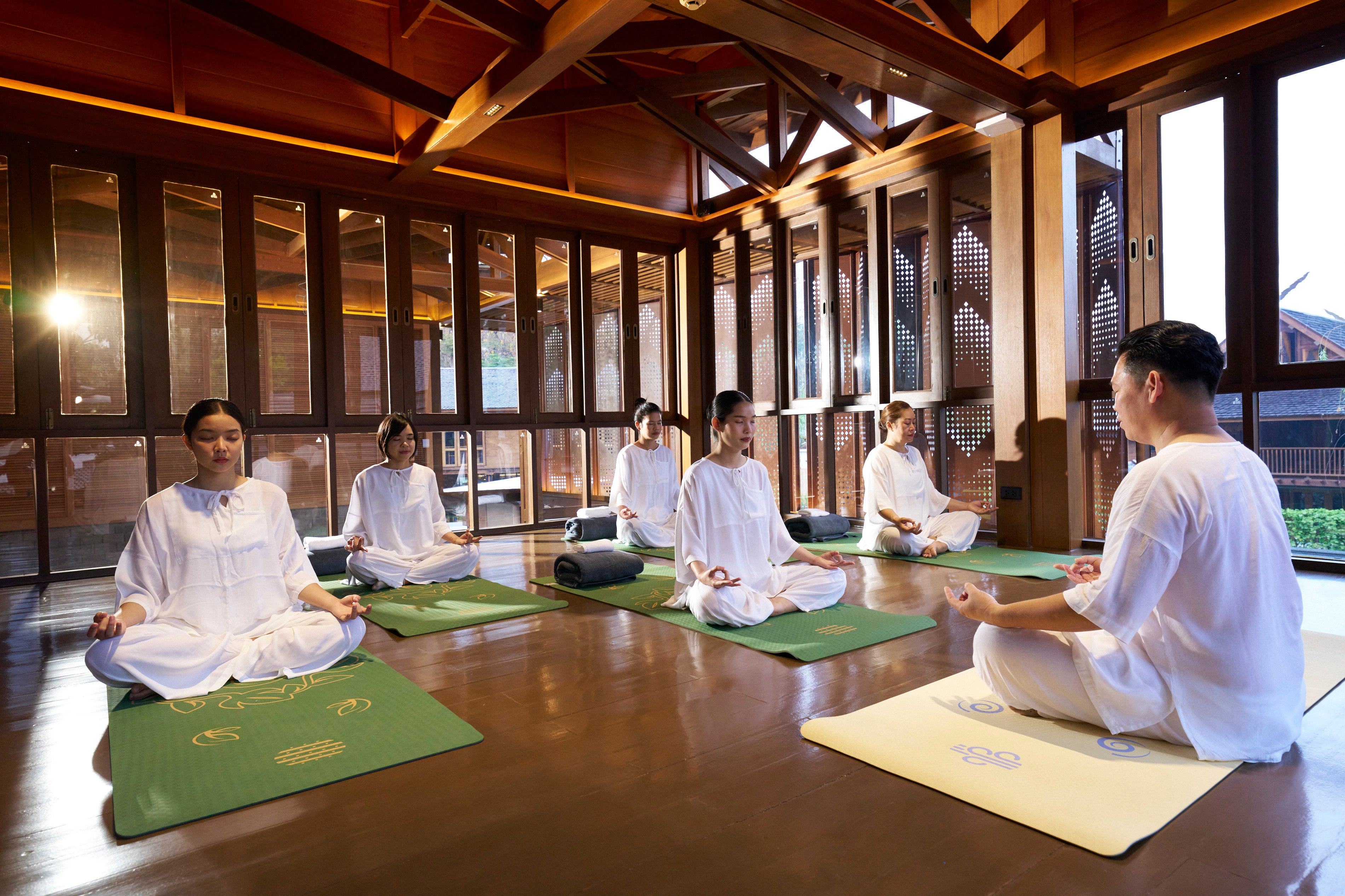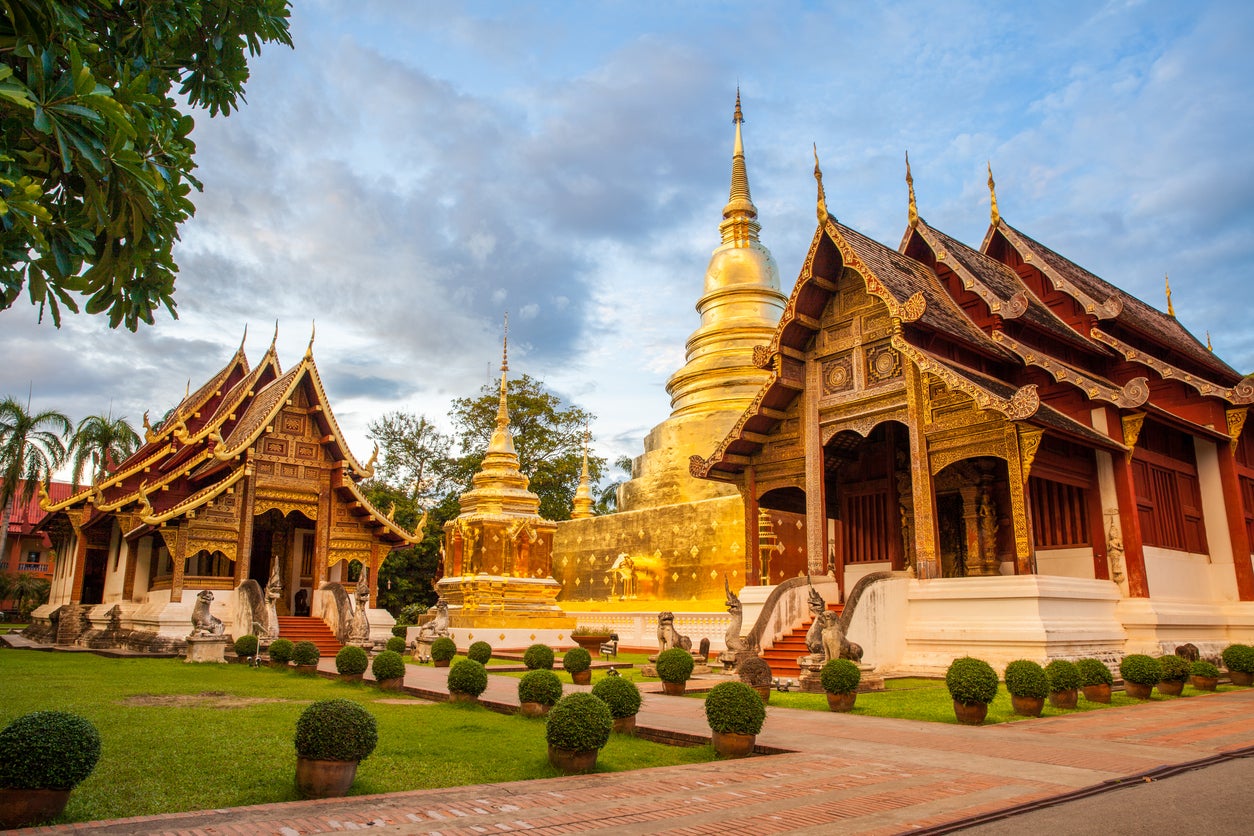This is what it’s really like on a silent meditation retreat – and it might terrify you
The sound of silence is what many busy, stressed out people crave, but what does a retreat without distraction really look like? Ruby Deevoy explores the challenges and benefits of being alone with your thoughts


Your support helps us to tell the story
From reproductive rights to climate change to Big Tech, The Independent is on the ground when the story is developing. Whether it's investigating the financials of Elon Musk's pro-Trump PAC or producing our latest documentary, 'The A Word', which shines a light on the American women fighting for reproductive rights, we know how important it is to parse out the facts from the messaging.
At such a critical moment in US history, we need reporters on the ground. Your donation allows us to keep sending journalists to speak to both sides of the story.
The Independent is trusted by Americans across the entire political spectrum. And unlike many other quality news outlets, we choose not to lock Americans out of our reporting and analysis with paywalls. We believe quality journalism should be available to everyone, paid for by those who can afford it.
Your support makes all the difference.A week in silence may sound like a dream to anyone drained by the constant stimulation of modern life. But the reality of a silent retreat can be far from what you might imagine.
Beyond the immediate peace, you’re left without distraction – without any escape. As you sit in meditation day in, day out, thoughts and feelings (physical and emotional) that might normally go unnoticed or even be pushed aside are suddenly given a chance to bubble up to the surface.
With nowhere to run, you’ve got no choice but to face them head-on. A challenge that might terrify many – but could ultimately be a benefit. Plenty of people find this particular form of sensory deprivation offers a transformative experience that moves them so much they go back for more.
“Engaging in prolonged periods of silence has been one of my most profound experiences” says Dr Aimon Kopera, a trailblazing authority in exploratory medicine and author of The Exploratory Mind: Rewiring Sentience.
“Silent meditation allows the body and mind to rest and reset, fostering a deeper connection to ourselves and enhancing self-awareness and insight. It’s a restorative process that’s not just about quieting external noise, but also about silencing internal chatter. This leads to a state of mental clarity and physical healing that can be deeply rejuvenating.”
Read more on wellness travel:
But this is by no means your average getaway. It can be tough. After all, when was the last time you sat in an extended period of total silence, if ever? They are suitable for most people, though, with the caveat of individuals with psychiatric problems or physical pain that would prevent them from being able to stay seated all day.
In the case of the world-renowned Dhamma Retreat, held in Herefordshire in the UK but found in centres all over the world, you’ll need to be prepared to sit in Vipassana – one of India’s most ancient techniques of meditation – from 4am until 9pm each day.
Other than aches and pains, this can present unique challenges, including the phenomenon known as “monkey mind” where thoughts incessantly jump from one to another, explains Kopera.

“Sometimes this leads to the resurfacing of emotional upheaval, but when managed properly this can be a healing process. I’ve even observed patients with chronic illnesses and life-threatening conditions deriving positive benefits from this practice”.
While you can attend courses that take you full monk-mode, like the Dhamma retreats, there are luxury options that offer a softer experience. The Deep Meditation at Aleenta Retreat Chiang Mai, in northern Thailand, is based on the same Buddhist practice of Vipassana as the Dhamma courses. But here, the approach is personalised to meet your needs and experience level over three, five or seven days in a five-star resort in the Thai spiritual heartland. While the ‘lite’ option creates an accessible path to the transformative power of mindfulness, the second provides more rigorous training of the mind and includes meditation practice at nearby the nearby Wat Ram Peong temple.
A silent retreat closer to a holiday might sound more appealing, but the pared back, fairly gruelling 10-day Dhamma Vipassana Meditation remains an incredibly popular choice. Not only do participants commonly refer to these residential courses as “life changing”, but they also operate on a ‘pay what you can afford’ system. If you’re really hard up, you’re not even required to cover the cost of food and accommodation. Unsurprisingly, you do need to sign up fast when dates are released in order to secure a place.

The benefits to be gained from spending time in silent meditation are more than just anecdotal. Studies have shown that Vipassana, which has been used as a spiritual and healing modality for over 5,000 years, has the potential to reduce stress, anxiety and depression. Research exploring the effects of a seven-day Zen meditation retreat also found that meditators had increased focus after the course, and enhanced neuroplasticity (the brain’s ability to adapt and grow new pathways).
But how does this translate to real-life? Shannon Brown, co-founder of wellness retreat space CAIM in Scotland, signed up for the 10-day Dhamma Dipa Vipassana meditation course in Herefordshire after feeling drawn to it for years.
“I practice yoga and meditation on and off, so I didn’t do much to prepare myself. But three days in I really wished I had,” says Shannon. “The first couple of days I battled through irritation and I struggled to still my mind. I actually almost quit a few times because it was such a challenge to surrender to the experience.
“But by the fifth day I started to feel rage rise up inside me. I’m normally a very calm, happy person, so this took me by surprise. It was so overwhelming I felt like I wanted to turn tables over and scream.”

It almost got too much for Shannon, as happens to many participants who brave the long haul, but through sheer willpower, she was able to refocus and navigate the challenges she was facing, alone.
“It was really tough. I’ve taken part in ayahuasca ceremonies in Peru, and amazingly this was just as intense,” recalls Shannon.
“But once I managed to break through the emotional and physical discomfort I had come up for me, I felt amazing. Day five was the hardest of all, but by day six I felt blissful despite the challenge. It was almost as though the sedentary sludge I’d had lying deep down in my foundations had been stirred up and thrown out. I gained such a beautiful sense of clarity, peace and gratitude.”
You don’t have to be Buddhist to take part in a silent retreat. And you don’t have to opt for the long or stripped-back courses right away (or ever) to quiet your mind and refocus your energy on harmony and happiness – which is really the ultimate goal. But to make the most of this new, yet ancient, trend, you do need to be willing to breathe, dissolve your rigid thought patterns and meet yourself. To face off with your innermost thoughts. To move through anger, sadness and negativity, to finally find liberation on the other side.
How to do it
Aleenta
The retreat starts from THB 17,000 per night (£380) single occupancy and THB 25,000 per night (£560) double occupancy and includes accommodation, airport transfers, two daily meditation sessions, up to two movement classes per day, ‘wellness cuisine’, integrated health diagnostics and one spa treatment for each night of the booking. Aleenta.com
Dhamma
Dhamma courses are held all over the world and operate on a ‘pay what you can afford’ system. In the UK, you can visit the Dhamma Dipa, an 11-acre property set in rolling farmland between Hereford and Ross-on-Wye. Accommodation is shared and food is included. Returning students wanting to try the long course (20 days) can visit the Dhamma Padhana, Herefordshire, where each student lives and meditates separately with single en-suite accommodation and a small private meditation room. There are also two-day courses designed for children (aged 8 to 11) and teenagers (aged 12-18).
Read more: A weekend trip to this Bucharest wellness retreat costs the same as a day pass to a London spa
Join our commenting forum
Join thought-provoking conversations, follow other Independent readers and see their replies
Comments